An F/A-18F Super Hornet assigned to the USS Harry S. Truman (CVN-75) went overboard during a failed landing attempt on Tuesday, 6 May 2025, at around 9 p.m. local time.
The aircraft, belonging to the “Red Rippers” of Strike Fighter Squadron (VFA) 11, failed to catch the arresting wire while attempting a night landing, resulting in the jet going overboard.
According to a defence official, both aviators safely ejected and were rescued by a helicopter from Helicopter Sea Combat Squadron 11. Medical personnel assessed them and reported only minor injuries. No flight deck personnel were hurt in the incident.
The cause of the failed landing remains under investigation, with uncertainty over whether the arresting wire itself failed or the aircraft’s tail hook did not properly engage. As of Tuesday evening, the USS Harry S. Truman remained fully operational, and there were no indications that the mishap had disrupted flight operations.
This incident marks the second Super Hornet loss from the USS Harry S. Truman within two weeks. Just last week, a single-seat Super Hornet from the “Knighthawks” of VFA-136 fell into the sea from an aircraft lift after the carrier performed an evasive manoeuvre during a suspected Houthi attack.
Previously, in December 2024, another Super Hornet from the “Red Rippers” was lost during a friendly fire incident involving the USS Gettysburg (CG-64) over the Red Sea.
The USS Harry S. Truman and its embarked Carrier Air Wing One have been deployed from Norfolk since September 2024, with the mission recently extended by a week. The carrier has been operating in the Red Sea since February 2025 following emergency repairs after a collision with a merchant vessel, which led to the removal of its commander.
Since mid-March, Carrier Air Wing One has been conducting airstrikes on Houthi targets in Yemen as part of Operation Rough Rider. However, on the same day as the failed landing, President Donald Trump announced a halt to these strikes.
The recent string of mishaps has raised questions about the carrier’s operational tempo and the conditions under which these aircraft are being deployed. As investigations continue, the US Navy say that it remains focused on maintaining the safety of its flight operations.


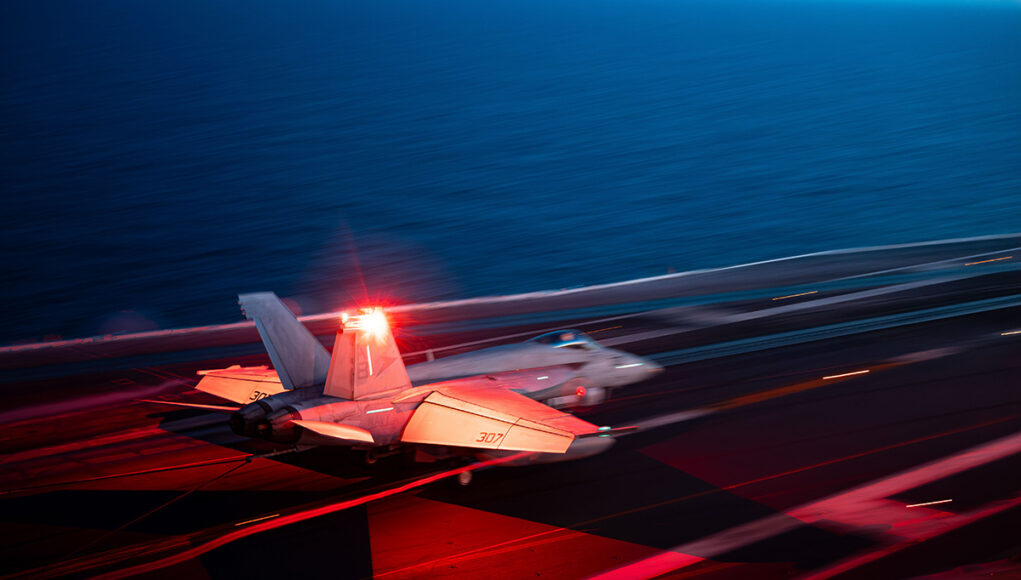
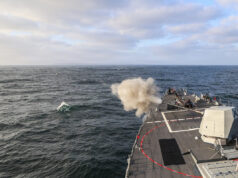
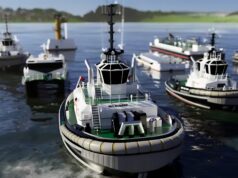
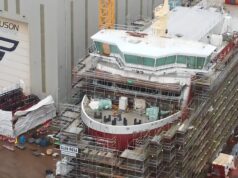
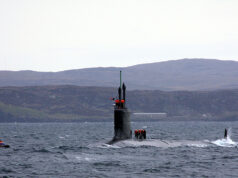
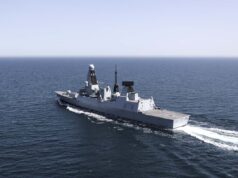

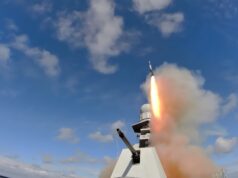
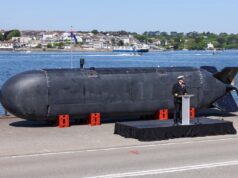
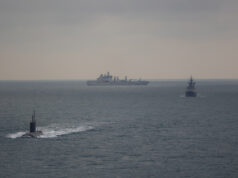
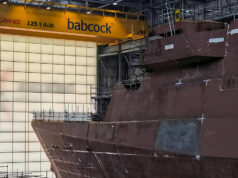

Don’t tell me. You’ve lost *another* Super Hornet?
BTW I’m getting a tick-box to “notify me via email if anyone answers my comment”, so it looks like the fix has come through? It needs to be selected every time I comment, but that’s a small price to pay.
Yes, I noticed that. I could not post until I ticked.
Fine.
OOPS!
This from Reuters news agency
Trump announced on Tuesday the U.S. will stop bombing the Houthis in Yemen, saying that the Iran-aligned group had agreed to stop interrupting important shipping lanes in the Middle East. After Trump made the announcement, Oman said it had mediated the ceasefire deal, marking a major shift in Houthi policy since the start of Israel’s war in Gaza in October 2023.
Under the agreement, neither the U.S. nor the Houthis would target the other, including U.S. vessels in the Red Sea and Bab al-Mandab Strait, Oman said in a statement.
Source: Reuters
That’s promising. If it was only Trump or his adminstration stating it, I wouldn’t believe as his history with peace deals is as far as I can tell 100% failure and smoke and mirrors, but Oman backing it up is promising.
Freeing up the route for more shipping has to be a good thing to help semi balance out the tarrifs the US have added on everything.
Feel the same Steve, must admit when I heard his announcement of the Houthis ‘begging to surrender’ from Trump’s mouth I suspected it was pure misdirecting fluff as usual, so even if half true it is a big win.
I don’t know why you’re calling the Gaza war Israel’s. The rabid murderers of Iran’s proxy, Hamas started it. Deliberately so as to blame the Israelis. If it’s anyone’s war, it’s Hamas’s.
speaking of the tariff business, and the American clear targeting of British interests, I think it is time to give notice to the team for return of R.A.F mildenhall and Lake health to the U.K.
Why not after the US has urinated on us
That’ll be good. The bases will sit empty and all the people who live around them will lose their jobs. Another Brexit win!
How the fuck you can link that comment with Brexit is beyond me.
Are the Houthis going to stop attacking ships in general, or are UK and EU ships still going to be at risk?
If so, then we are really going to have to step up defence efforts, having the US there at all has been a huge deterrent. Of course, that assumes the Houthis are confident in their ability to discriminate between US and EU ships in their targeting.
Yes it looks like it’s Red Sea shipping in general..but explicitly not Israel. Looks like Trump has thrown Isreal under the bus this time around.
I had understood that a CATOBAR jet lands on a carrier at full throttle so that if it doesn’t catch any wire, it can take off again. Is this not so? So did something go wrong? At what point would someone eject?
I’m no expect but I suspect that is used for the scenario that the plane isn’t able to fully touch down due to freak wind events etc and not the machinery itself not working. I would assume once they actually touch down they start breaking to help the trap do it’s job.
P.s. there really isn’t a need to request consent for collecting data on data protection law, there are other legal basis available. Problem with collecting it, means someone needs to be able to unconsent and have all their data deleted, which might not be too easy.
Jon is right SOP is to go Full MIL as soon as wheels hit, retard when deceleration detected.
If they followed SOP as has been correctly described above then a failure of the tailhook after the aircraft had decelerated enough so that it couldn’t reach stall speed but before it was slowed sufficiently to stop under breaking would be a likely scenario as would a break in the cable but the latter is very rare so long as it is properly configured for the type of aircraft and it’s current all up weight. Pilots report that information when they are on final so that the wires can be configured.
They may say something like 202, Rhino, Ball, 4.4. That that tell the carrier is what their nose number is, what sort of aircraft they are of which Rhino is the designation for a super hornet, Ball means that can see the meatball and 4.4 their current fuel in thousands of pounds. The carrier then configures the traps for a Superhornet with 4.4 thousand pounds of fuel.
There have been cases before where the traps were set incorrectly before and caused a cable to snap but this can lead to casualties on deck as the snapped cable recoils about.
It should also not be forgotten that landing on a carrier at night is pretty much universally recognized as the most dangerous thing naval aviators do in their jobs along with landing on a carrier during the day. It’s the time where the smallest issue can have the most catastrophic impact.
Yes, me too. Thought they go around.
There’s a YouTube video of a Bucc trying several times on Ark Royal before the Captain ( or flyco, unsure who decides ) said enough is enough and diverted it to land, at Mawgan I recall.
I haven’t checked it out on YouTube but I’m pretty sure that’s one and the same as featured in the 1976 BBC Series ‘Sailor’ – and yes I watched it avidly back then and from time to time I’ll watch it again as I have the boxed set. I think that episode was entitled ‘The Squadrons Are Coming’. Needless to say it’s pretty much the best episode of the entire series – in my humble opinion! Even the approach of the Sea Kings – en masse – is impressive and I’m sure the FAA were deliberately putting on a show. The guy you were talking about is the flyco and I think I recall he held the rank of Commander – and the guy in the Bucc was a first-timer for a carrier landing. I read an account not too long ago that although his inexperience appeared to be brushed off in ‘jolly good show’ fashion on screen, in real life he got a bit of a bollocking.
That sounds like it. 👍
They do go to full power when they touch down. Which suggests this could have been a cable failure. The jet could have slowed to a point it could o longer takeoff again if the wire had caught it, then failed.
But if the aircraft is that slow, wouldn’t the aircraft brakes be effective enough to stop the aircraft even on the length of deck left.
The other possibility is that one or both engines failed to spool back up to full power, and that’s why the Hornet failed to get airborne again. Just a thought…
Not with the kind of momentum behind the jet when it lands. That’s a big chunk of metal to stop in a very short distance if thr cable fails. It’s a rare event. Bur these incidents just highlight how dangerous aviation at sea can be.
Horrendous when the cable snaps and then horrendous whips around the deck with enormous forces.
CATOBAR isn’t a super safe solution.
I hope this highlights to people why ‘changing’ a QEC to CATOBAR isn’t a super easy solution in itself.
The % failure rate is likely higher with CATOBAR, as RN has no experience of operating it, and building that pilot knowledge base for QEC as a platform would be a slow business.
I mean, what’s going to go wrong for a vertical landing?
How far does an F35 have to drop before it causes structural damage to the deck?
CATOBAR is actually a lower failure rate if you consider the much higher volume of cat shots and traps. The QE lost a plane on a STOVL takeoff. There have been several harrier VTOL landing accidents. It comes with the territory. Carrier ops will NEVER be as safe as land operations.
Ejection wise, most that iv’e seen are either very close or actually dropping off the flight deck. Really not a lot of time for critical decision making. At least this appears to be single seater, although i believe most two seaters can “command” eject both individuals ( correct me if i am wrong)
Sorry, just visualised a cartoon of a battleship trotting along in heavy weather and it’s front turret popping off
Good to hear both crew ejected in time and both are well. Brings to mind the RN pilot on the QE, who ejected safely from his F35. In both cases the jets went over the bow of the ship and, in both cases, it illustrated how quickly both crews took action to eject. All down to training and procedures, I guess.
I’ve a feeling there might be another loss in confidence of the leadership …
I feel a bit sorry for the Truman crew, they are operating in an environment where no modern carrier has ever operated in having to dodge ballistic missiles, drones and anti ship cruise missiles and they have done this for months without sustaining single hit while conducting high tempo combat operations.
But they ere being made to look incompetent by the media.
I think the conditions the crew are operating under is what the media should be sharing not the loss of two planes through understandable mishaps.
It’s also worth pointing out the issues like this are an inherent risk of CATOBAR operations. CATOBAR is an inherently dangerous system for naval aviation only made to work with rigorous crew training and large amounts of technology.
Having long sustained operations like this will always lead to faults. Frankly it’s amazing they have only lost two aircraft.
Three aircraft.
Only 2 carrier related, the other one friendly fire.
Did anyone get to the bottom of the Gettysburg incident?
Putting too many details would probably compromise AEGIS, so I doubt we’ll hear the full story even on the final report.
More like a failure of IFF integration into AEGIS?
Should all be automated…..
Sorry SB, looks like the 4 comment limit still stands so I can’t reply directly.
That’s exactly the point, if the USN were to detail exactly what happened with their automated IFF, then it would probably be possible to make inferences about response times and weaknesses of aspects of AEGIS.
You can’t make an omelette without breaking eggs. Don’t forget landing on a carrier is basically a controlled crash. They really slam them to the deck. Almost inevitable sometimes things go wrong. Brave people all of them. Thankfully no loss of life.
I did once read where the RN were looking at covering the carrier deck in a cushioning rubber mat and the aircraft doing belly up landings. Glad saining heads prevailed on that one!
Three aircraft lost in 5 months, that’s a lot of critical incidents to be reviewing.. you have to start to wonder a about that carrier battle groups operational readiness…I would imagine there is going to be a right old cull of COs from this deployment.
They have been going high tempo for months, fatigue is a thing for both people and machinery and as complicated as carrier ops are things are going to happen. We lost one (fatigue being a factor) on a calm (for a carrier) deployment. No personnel losses in any of those incidents thankfully.
The US Navy has over 500 F/A-18s in service with active orders, they will somehow manage…
Once the dust settles answers will be had and decisions made, the US isn’t shy about declaring “a loss of confidence” but the Harry S. Truman and her escorts aren’t just flying a flag for photo ops in the Med.
I agree.
If the cable snapped or the hook snapped, provided correct procedures were followed binning the CO or XO won’t help one jot.
If the pilot/maintainers didn’t follow procedure/orders you don’t blame the CO…..etc, etc…
That’s a great way to cut off your nose to spite your face. Cui Bono? Closing those bases would be in line with the current US administration’s goals to withdraw US forces from Europe. I wonder if the people who benefit economically from thousands of personnel stationed at Lakenheath or Mildenhall would be so flippant about such to prove a political point against an administration that will be gone in 3 1/2 years.
There will always be attrition losses. The RN left CSG 2021 with 8 aircraft and returned with 7 (87%). The Truman left with 74 and will return with 71 (95%).
Or put another way if we wanted to be nasty we could say once is an accident, twice is a coincidence and three times is a pattern.
But we are all trying to be nice now 😎
I’m sure both navy’s know what they are doing and are operating in difficult circumstances.
Only if they were the same sort of accident. In this case they were all different. One bar coming out of the shuttle, one friendly fire, one likely to be equipment failure on some very old kit and today which currently we are just guessing about. This feels more like Murphy’s Law. Anything that can go wrong will go wrong, and usually at the most inopportune moment.
Or a stretched tired crew that’s wasn’t properly trained up before entering a combat zone with escorting vessels that did not complete the mandatory certification but were passed anyway, all sent by N institution that’s over stretched in every direction that leads to multiple errors.
Wow, another one has gone, another commander going too?
Glad the pilot was picked up and is safe.
These assets are not and never will be ornamental. Use involves risk. How many successful deck operations have their been since the USS Harry S Truman was deployed into a conflict zone?
See , mariner’s of old knew all about the Kraken and other creatures of the deep .With the ability too rise up from the depths and snatch unserspecting Ships ,crew and aircraft .